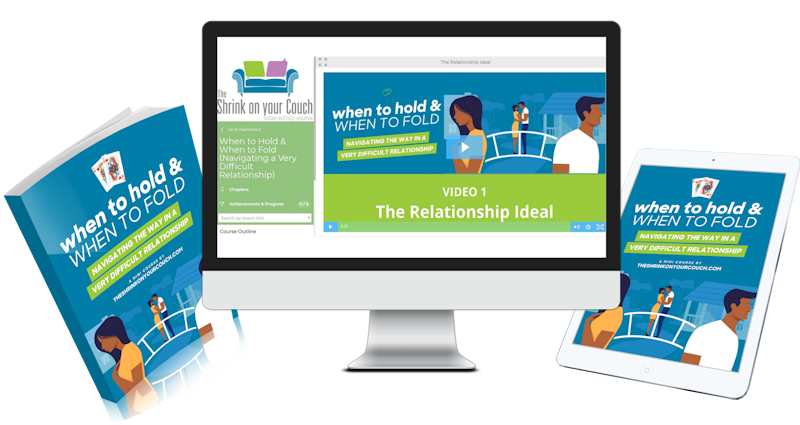I’m convinced that, at times, we don’t really have relationships with each OTHER. Rather, I suspect, we sometimes have relationships with the images and imprints we unconsciously create of people in our minds. These imprints are like puppets, dangling on the strings controlled by our own demons, insecurities and fears. These puppets then dance and act in accordance with the hang-ups on which they are suspended.
And the REAL person, represented by their false imprint, watches on, confused, perplexed, frustrated, and possibly quite hurt.
Someone on the periphery of my world is ignoring me. It’s not a person I know very well; in fact I only know him in one context, which is as the recipient of a service he provides professionally. So I am his client. And he is ignoring me. 2 WhatsApp messages, a phone call and an email, “blue ticked” and delivered, with no response.
I was explaining the situation to my husband earlier. I was aware of the multi-layered approach to the way I was telling him the story: I started by laying out the known facts about the situation. The things that are patently clear and visible to the naked eye. Anyone’s naked eye. Not just mine, i.e: I need something urgent from said service provider. He is well aware of my need. He does not respond, nor justify his lack of response. These are pure, irrefutable facts.
And then, as we do as humans, I moved into layer 2: I started to speculate, hypothesize and interpret the situation. I offered a few possible rationales for the radio silence. If the facts of the situation are “dots on a page” in a children’s activity book, layer 2 of my conversation with my husband involved JOINING THOSE DOTS. You know how kids are taught create various images from the flurry of dots on their page (often, in THEIR instance, by following numbers sequentially). But I don’t have the luxury of numbers on my dots, to guide me to emergent, concrete truth.
Adult life isn’t like that. All I am afforded is a flurry of dots, and my own human compulsion and need to join them. So that I can understand. So that I can resolve.
But I simply cannot join dots provided by another person, without that person’s input. Frustrating as this is. I can create a picture, for sure. But I cannot assert, with any confidence, that my created image has any validity, in terms of that person’s reality and intention.
The bald truth is that I have zero objective knowledge as to why this person is not responding to me and my expression of need. The ONLY way on this earth for me to glean such information would be if he were to share it, and if he were honest and truthful in that sharing, firstly with himself, and then with me. Those are the absolute criteria for me coming to know. In the absence of such, I simply never will. Even if I think I do.
Sidebar: I’m not particularly torn or personally devastated about a service provider not serving (although I am inconvenienced and irritated).
But this got me to thinking about our friendships, relationships and collegial dealings, and how significant these principles are in such arenas. And how we ALL automatically join the dots of obvious evidence, to create “truths”. But I can almost guarantee that the created truths will often reflect the fears, insecurities and complexes of the DOT JOINER, rather than accurately represent the image intended to lie beneath.
In short, we’ll jump to conclusions, and make assumptions. And assumptions are judgmental, either of ourselves (he doesn’t like me, I irritate him, actually I irritate everyone, I said something wrong...), or of HIM (he’s a jerk, he’s rude, he’s incompetent). Now some of those assumptions may actually be true. We can, of course, at times, get it right - whether as a function of intuition, life experience or fluke. But very often, we’ll get it wrong, and that error is actually really dangerous as it becomes a stark point of departure from our real contact and connection with that other human being.
I saw a post on Facebook, with an anonymous author who does in fact deserve high praise. This person wrote:
“I read a book which blew my mind. The main character goes crazy when he realizes that no one actually knows him. The gist is that the person you think of as “yourself” exists only for you, and even you don’t know who that really is. Every person you meet or have a relationship with or make eye contact with in the street creates a version of you in their heads. You are not the same person to your friends or siblings or friends or co-workers. There are 1000 different versions of you out there, in people’s minds.”
Don Miguel Ruiz, in his New York Times best-seller, “The 4 Agreements” (intended to engender unimaginable levels of person freedom when applied), supports the idea of not jointing dots, and not interpreting the behavior of others. He cautions his reader “not to take anything personally”. That “nothing anyone does is because of you. What others say and do is a projection of their own reality, their own dream. When you are immune to the opinions and actions of others, you won’t be the victim of needless suffering”. He goes further, adding “don’t make assumptions” to his list of wise counsel.
As a psychologist and relationship therapist, I am so often struck by how peoples’ interpretations and dot-joining of other people’s behaviour proves to be wrong, in the final analysis. And how malignant these interpretations often end up being, because they are given Absolute Truth status, and the other person’s truth becomes almost completely discredited and basically irrelevant. I see it in the arguments that ensue in my office… If Person A states that “Person B did THIS, and THIS is what it means”, and Person B argues that s/he has been completely misunderstood/misinterpreted, what are we to do? Person A has likely been harboring his/her interpretation of Person B, for some time, and has internalised and accepted this as truth. S/he would probably, at this point, be living as though the interpretation were absolute truth. It then such a conundrum to bring the dot-joining interpreter back round the the idea that s/he may actually be wrong. This feels almost like a joke and shock to their system, so convinced are they of their interpretation.
Of course, this dot-joining interpreter is free to run with his/her opinion… But real human contact occurs when they are able to suspend their interpretation, for a minute, and actually pay heed to the truth that their partner is trying to show and tell. And, no matter the extent to which their brain hurts in listening, to consider the possibility that this version may just hold some validity… And then to actually try and trust that person sufficiently to experiment with a different way of looking at the situation they thought they had so well formulated. In this instance, I almost get a visual of someone trying to help another person across a rickety bridge or a torrid stream… Where success is impossible in the absence of a moment or relinquishing self to other… There’s that split second where, contrary to our human nature, we have to take another person’s hand, and hope to hell that they have the strength and fortitude to lead us, and not let us go.
And so it is in human communication… Suspending our own appraisal of a situation, taking the other’s hand, and just imaging for a moment that we got it wrong, or our view is skewed or exaggerated, is a great act of faith and trust. And, as I always tell my clients: trust is like bungee jumping. One has to launch themselves off the bridge, and simply trust that the rope is not too long. But in order to have the wonder of the experience, one really has to jump.
My summative advice in this article is 3-fold:
- Pay attention to how you tell stories. Know when you are in the realm of facts (“dots”), and be aware when you have crossed over into the realm of interpretation (“dot joining”).
- Know that it’s indeed human nature to attempt dot-joining; we are fundamentally investigating beings, seeking finality, closure and understanding. But know too that, no matter how astute and insightful we may be, we simply cannot interpret or know anything, categorically, about any other person, without their endorsement, validation and buy in.
- When we are presented, by the “other”, with a story that vastly contradicts our own interpretation, we would do well to entertain the notion that we joined dots incorrectly, and challenge ourselves to at least partially incorporate their narrative into ours. This is of course most valuable in friendships/relationships in which we are invested, and where there exists a primary bond and desire for unity.
COMING SOON!
I am in the development and filming stage of a digital relationship therapy course – which I’ll be calling “RELATIONSHIP REHAB”. This online program will take a couple through a healing and communication journey, using a series of video and MP3 teachings, worksheets and exercises. Specifically designed for busy professionals who cannot get to contact sessions on a regular basis, or who are very discrete and don’t really want a stranger privy to their issues. The beauty will be that even individuals in a couple will be able to buy this, and effectively “teach” and “cajole” a less convinced partner, until such time as both buy in and benefit from it together.
As a precursor to this course, I have written a short e-book which is freely available to anyone wanting a copy. It’s called “STOP FIGHTING AND START COMMUNICATING: 3 Strategies to Break the Toxic Conflict Cycle In Your Relationship”. Get yours here, if you haven’t already.
I am also developing a MARRIAGE PREPARATION PROGRAM, which will teach engaged couples everything I have learnt from 15 years of working with struggling couples.
Both will be tool and strategy-rich, with a focus on action and resolution.
Please also join me on my FaceBook page.
Thank you for getting this far 🙂
Here’s to the road ahead!

